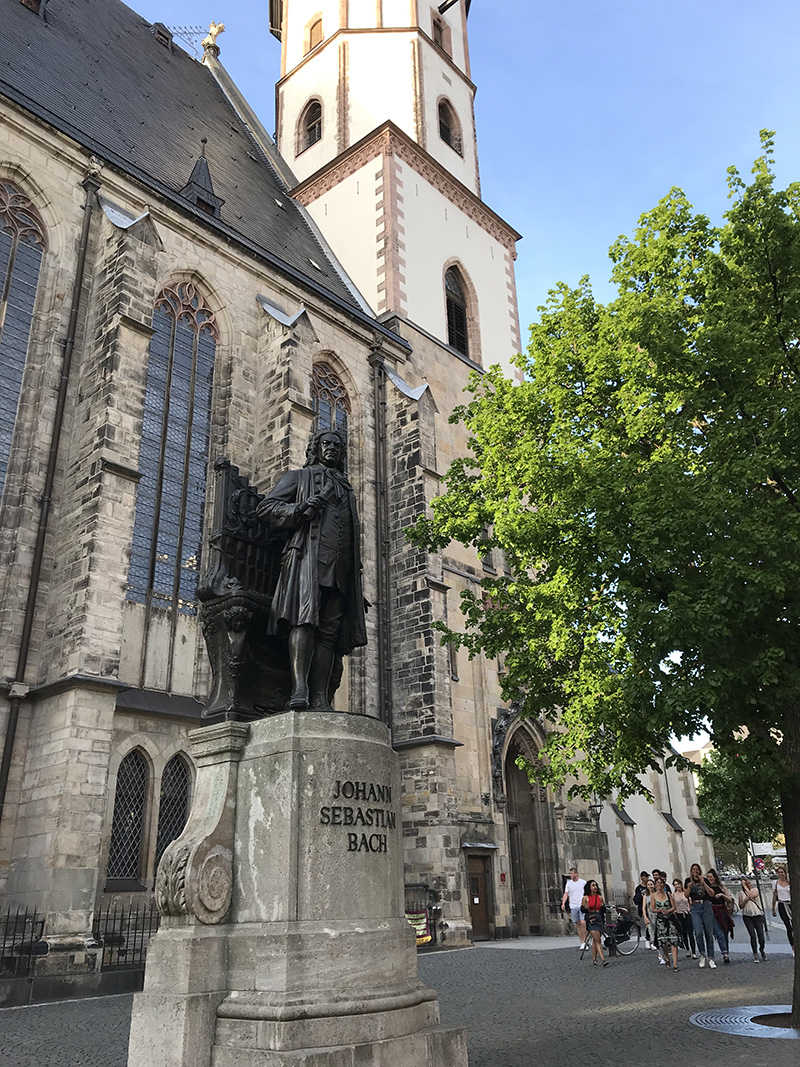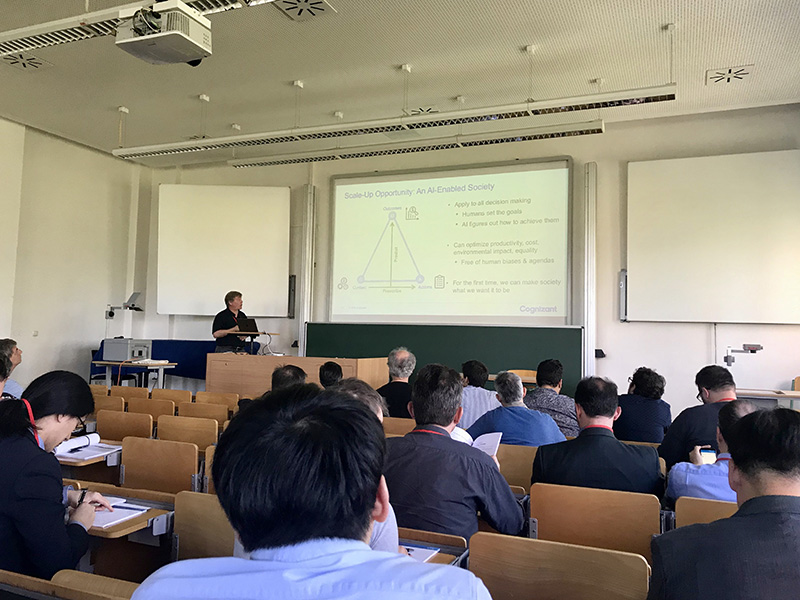Jon McCormack attended this year’s EvoStar conference in Leipzig, Germany. In this post he reports on the conference highlights and research he presented.

EvoStar is a collection of conferences concerned with evolutionary computing and other biologically-inspired algorithmic techniques. The event is held annually in Europe. This year, the location was the picturesque city of Leipzig, Germany and the conference took place in the historic “Wiener Bau” building of the Faculty of Electrical Engineering and Information Technology, University of Leipzig. The building, designed by Leipzig architect Hugo Licht, was completed in 1903 and fully renovated between 1992-2002. The building’s name is in honour of cybernetics pioneer, Norbet Wiener.
The conference began with a keynote by Risto Miikkulainen titled: “Creative AI through Evolutionary Computation”. Miikkulainen — a computer scientist from the University of Texas who now works at Cognizant — argued that, to date, Artificial Intelligence has only been good at optimisation and classification, but the next stage is for AI to become “creative”.
He used three recent examples: web design optimisation, robotic navigation and cyber-agriculture. In the web design example he illustrated how evolutionary algorithms can optimise the “design” of interactive web sites to maximise “commitment” (clicking through to buy or adopt the goods or services of the website). He illustrated the design of a search widget that to any human designer would look rather hideous, but resulted in a noticeable improvement in click-throughs amongst the site’s users.
The AI-Enabled Society
Miikkulainen concluded with a rather disturbing techno-utopian vision of the “AI-Enabled Society”: one in which, “For the first time, we can make society what we want it to be”. There was no mention of who the “we” is that will be making this new AI-enabled society.
In my view, researchers have a responsibility to think through statements like these more carefully before making such naive proclamations. They say much implicitly about the kind of thinking that drives much current AI research. The idea of absolving responsibility for societies’ difficulties to technology is a long recurring theme in technological narratives, yet has repeatedly failed to deliver.

EvoMUSART
Part of EvoStar, EvoMUSART is an international conference on biologically inspired approaches to computational music, art and design. The conference ran for 2 days (Wednesday and Thursday) in combination with other EvoStar conferences (EuroGP, EvoApplications and EvoCOP). EvoMUSART had three sessions around visuals, music and “best papers”. There was also a combined EvoStar poster session. I presented two full papers. The first, “Camera Obscurer:Generative Art for Design Inspiration” (paper here), which looked at how our work in visual similarity search using deep learning techniques can assist artists and designers to find inspiration from their environment and from curated selections of generative and human art.
The second paper, “Autonomy, Authenticity, Authorship and Intention in computer generated art” (paper here) responded to the recent auction of an “AI generated” artwork for US$432,500. The paper looked into the claims made about the work and situated the discussion around the extensive research and opinion offered in this area over the last 50 years regarding the autonomy, authenticity and authorship of artworks made by computers.
The next big thing: neuroevolution
An often-heard catchcry around the conference was that the next big thing will be Neuroevolution — using evolutionary computing techniques to evolve new deep-learning neural networks. Of course, this isn’t anything new, as techniques for evolving neural networks have been around for almost 30 years. I suppose the difference is that we now have much faster CPUs/GPUs and more access to large datasets than ever before.

The closing talk was by Bioinformatition Manja Marz from the University of Jena. Her talk linked interesting research discoveries in genomics with some provocations on how they could be used in evolutionary computing. One interesting property of DNA is that it is a kind of “fractal sequence” in that its structure isn’t just a random set of bases. DNA from different species has makes a different fractal pattern. This lead to the suggestion to consider “optimisation by fractal-like programming” through overlaying meta functions, for example.
All up, it was an interesting and stimulating conference. While there was nothing particularly radical or groundbreaking presented, the cumulative mix of evolutionary-based conference tracks and the multi-disciplinary speaker mix made this a worthwhile conference to attend.
Next year’s conference will be in Seville, Spain.
About the Author
 |
Professor Jon McCormack is Director of Monash University’s SensiLab and an ARC Future Fellow. Follow Jon on twitter |
|---|---|